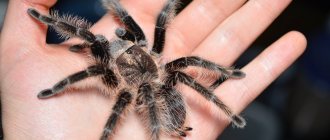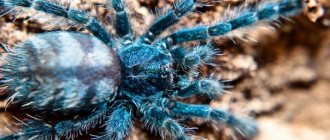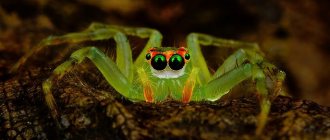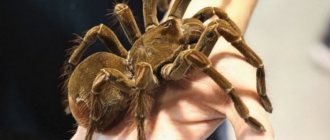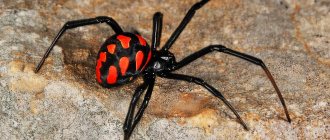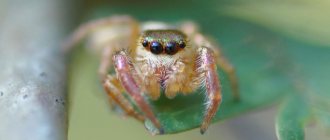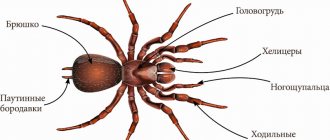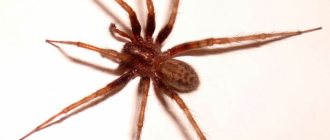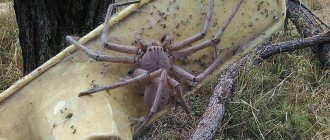There are currently 883 species of spider described in the scientific literature. A large number of species are found in Mexico and Brazil and about 20 species in Panama that were previously found in Mexico, which indicates their migration.
Many Brachypelma species are found along the Pacific slopes of the Sierra Madres (Western and Southern Mexico), and the western side of the Transverse Volcanic Belt and mountain ranges of Mexico. Brachypelma Vagans and Brachypelma epicureanum are found in the Atlantic states of the United States.
The spider has a calm character and flexible nature, quite colorful coloring and is not aggressive. Easy to maintain and forgiving of many mistakes, suitable as a first pet.
In Mexico, spiders live in areas with the following climate:
- rainy season, which lasts from June to July:
- October to November is the dry winter season, which lasts until July.
Average life expectancy of spiders of this species:
- females from 20 to 30 years old;
- males up to 10 years old.
In Russia, three species are popular as pets; we will consider them below.
Brachypelma Emilia
The northernmost species is found west of the western Sierra Madres range in the State of Sinaloa, Durango and Coahuila.
Habitats range from dry coastal areas to palm transitional forests and tropical rainforests. Found at various altitudes. Nevertheless, it builds its burrows under leaves and soil, thereby providing itself with the necessary humidity and protection from sunlight. The size of the hole is from 20 to 100 cm.
Brachypelma smithi
Names and hybrids
When looking for information about this spider, it is important to know what names it can be found under. In addition to the Latin and Russian name of the spider, you can find the following names:
- Mexican black velvet.
- Mexican red pump.
They can be used to find information about the tarantula on the English-language segment of the Internet. In addition, it is often called not the red-haired one, but simply the red Mexican tarantula.
The tarantula spider lives in the South of North America
In addition, the genus Brachypelma includes other similar spiders, including the most famous representative of the genus, Brachypelma albopilosum. It is he who occupies first place in the popularity chart, ahead of even the tarantula vagansa. Confusion arises not only with this species, but also with others, for example:
- Brachypelma sabulosum.
- Brachypelma angustum.
They are often sold under the guise of the Vagans tarantula. It is not so easy for a novice amateur to distinguish between them.
Some even claim that all spiders available in the CIS are not Brachypelma vagans, but only representatives of these two species and hybrids from B. vagans and B. albopilosum. Unfortunately, such hybrids are not always healthy and may have developmental deviations. Very often they do not even survive to adulthood due to poor health. You can recognize them by comparing the spider with both representatives of the corresponding species and finding common features with both one and the other species.
Brachypelma smithi
It has a bright orange-red coloration on the kneecaps of its feet and is found on the upper edges of tropical deciduous forests and cool, dry uplands. Less demanding on high temperature and humidity.
All Brachypelma love to dig holes and hide from the light. In home spiders, they dig holes only if something bothers them and if they have nowhere to hide. Young spiders often dig holes.
On this topic, you may be interested in: How do spiders differ from insects?
In nature, a spider is sometimes found in cohabitation with frogs or snakes in the same hole, and lives peacefully with them.
Small spider Brachypelma smithi 3-4 molt
Origin
Brachypelma smithie lives in North and Central America, the southern United States and the Pacific coast of Mexico. It was in Mexico that the appearance of this spider was first noted. In the region where this type of insect originates, a dry climate prevails, which can be characterized as dry savannah. In these places, the rainy season occurs during the warm season - from May to October. However, rain does not bring much moisture. And from October to November there is no precipitation at all.
In the 70s of the 20th century, brachypelmas became popular among exotic lovers and virtually disappeared, due to their catching for sale. Today, this species of tarantula is under the protection of CITES, thanks to which the catching of brachypelma was prohibited, and it was decided to use home-bred spiders for sale. A ban has also been introduced on the import and export of any spiders of the genus Brachypelma.
Reproduction
The breeding season of almost all brachypelma species occurs during the monsoon season.
The male and female spiders are similar in color and pattern, but have some differences in morphology, color intensity, body size and lifespan.
The spider's clutch matures in the dry winter months and usually breaks open in late spring, from where small spider nymphs emerge.
Some breeding studies of Brachypelma species have shown that adult females do not mate or lay eggs every year, although they have not yet been able to prove this.
Brachypelma Smitty spider in a glass spider cage
They are not found only in Antarctica
The tropical rainforests of South America are home to the largest populations of tarantulas. You can also meet them on the African continent, Australia and Oceania. Tarantulas are difficult to spot in Eurasia. Only small populations have been recorded in Portugal, Spain and Italy.
Tarantulas prefer damp areas, such as swamps. They sometimes live in burrows dug or left behind by other animals, as well as in the canopy of equatorial forests. Some species live in drought-resistant semi-desert regions.
Contents of brachypelm
As can be seen from the habitat of these spiders, they are quite unpretentious in terms of humidity and temperature.
Small spiders can be kept in small plastic containers that they cannot chew and escape, such as plastic food containers. There is no point in planting them in a large spider bed, as they will simply bury themselves and it will be difficult to feed them.
In both small and large spider plants, it is necessary:
- Use coconut substrate as soil;
- Make a shelter for the spider;
- Maintain the necessary soil moisture, there should be no swamp, the soil should simply always be moist;
- Remove uneaten food residues;
- You can put a drinking bowl, but spiders practically don’t use it, it just adds moisture;
- In a large spider bed it is necessary to change the soil approximately once a year, in a small one every six months;
- Be sure to provide ventilation;
For large specimens, special glass spider cages are best suited, although the spider can easily live in a plastic container with ventilation.
It is necessary to take into account that these spiders are burrowers and do not like light; they leave their burrows mainly at night.
If you do not provide shelter and do not maintain the humidity level, they will begin to dig holes and hide in the ground. Under acceptable conditions and the presence of shelters, they do not dig holes.
Be sure to make places where he can climb, for example, like in my spider bed, place pieces of pine bark, only without resin. You can find some branches or roots, the main thing is that the tree is not susceptible to rotting, since the spider plant is always damp.
The bark or tree must be boiled in boiling water and dried well, this will kill insects and other pests and parasites.
On this topic, you may be interested in: Wasp spider, description, where it lives, why it is dangerous
For me, he almost always sits on it and doesn’t hide anywhere, which makes it very convenient to watch him.
The normal temperature for them is about 24 degrees, they live without problems from 19 degrees, so it doesn’t make much sense to heat the spider, although mine has a favorite place under the LED lamp, where it is always warm, the spider spends there most of the time, mainly in winter.
Brachypelma smitty warms itself under a lamp
Maintain a humidity level of 60 to 70 percent by regularly misting the substrate or placing a large bowl of water.
If you see your spider sitting over a bowl of water, but not drinking, most likely the spider web is too dry; if it sits in the farthest and driest corner, then it is too wet, watch your animal.
Lifespan
It is important for people who decide to keep this animal at home to know how long tarantula spiders live in captivity. Females, regardless of conditions, can live up to 30 years. As for males, their life expectancy is much shorter. They usually stop molting after reaching reproductive age, in most cases they die in the same year or after mating.
When maintaining a home, it is important to choose an arthropod suitable nutrition system and optimal temperature. If fed infrequently, the spider will live longer. Cold causes the metabolism to slow down, so the birder's development will slow down.
How dangerous are brachypelmas for humans?
Among the domestic tarantula spiders, brachypelmas are the most obedient and calm pets, for this reason they are ideal for novice breeders and are not afraid to be left with children, although it is not recommended.
Nevertheless, like any spider, it has means of defense, this is poison and hairs on the body.
When he feels in danger, he sheds prickly and toxic hairs from his body, which fall on the skin or eyes of the attacker, causing him discomfort and irritation. In humans, these hairs can cause an allergic reaction, mild inflammation and itching that can last up to several days. For this reason, if the spiderling is near people, it is recommended to cover the ventilation holes with a fine mesh, such as gauze.
The spider is not aggressive and when threatened, if shedding hairs does not help, it usually tries to run away and hide; it is very difficult to force it to bite someone.
Like all spiders, it is poisonous , but it bites only when absolutely necessary, since it needs poison to digest and kill food; often the bite can be dry.
The bite is not fatal if there is no allergic reaction, the poison is similar in effect to bees, consequences: pain, swelling of the bitten part of the body, fever, etc., it is better to consult a doctor.
Interesting facts about the tarantula spider
The tarantula spider gained popularity due to its large size. Terrarists are attracted by the bright appearance of the pet and the peculiarities of its life. There are many interesting facts related to the life activity of these amazing animals:
- Spiders have never had and never will have a sense of attachment, so they will never be attached to their owner. You should not think that the tarantula loves the owner and will become attached to him.
- The tarantula spider will never be trained.
- It is impossible to completely exclude the aggressiveness of a spider that lives in a terrarium.
- It happens that completely balanced and calm adult spiders bite their owners.
- Males have larger body sizes than males.
- Females are more expensive because they have a longer life expectancy.
- Females often eat their mates after mating.
- Females lay eggs in a special cocoon made of spider webs. At one time, the spider is capable of laying from 50 to 2,000 eggs. After 1.5 months, nymphs hatch from the eggs.
- There should always be a lid on the terrarium to prevent the spider from escaping, especially if there are small children in the house. This precaution will help prevent an accident.
- Spiders cannot be classified as insects, since they belong to a certain class.
- Representatives of arachnids can live 2 years without eating food.
- Tarantula spiders are the largest spiders on Earth.
- Pets use a very unusual method of defense - blinding their enemy with a stream of feces.
- For patients with the phobia “fear of spiders,” experts recommend keeping tarantula spiders so that patients can overcome arachnophobia on their own. In most cases, patients are cured of obsessive phobia.
- Some spiders are excellent swimmers; they feel great in water, even diving.
The tarantula spider is a unique animal
Health problems
Like most tarantula spiders, brachypelmas rarely get sick.
The most likely health problems can be caused by the following reasons:
- Fall from a height - the spider's exoskeleton is similar in structure to an eggshell, so a fall leads to its splitting and subsequent death of the pet. You can avoid the problem if you use a soft substrate and do not build too high structures in the spider web.
- Dehydration – Brachypelmas require higher humidity than other tarantulas. Make sure that the spider plant always has moist soil and a drinking bowl with water. Spiders do not drink water, but the water bowl maintains the humidity level, and they can sometimes bathe in it. Signs of dehydration in the spider, a slightly shriveled abdomen and very low activity. If he is severely dehydrated, he may curl his paws under him. If you see these symptoms, move the spider to a separate container containing a damp towel, after a while it will come to its senses. Do not put him in a container with water, he may drown, since his lungs are located in the lower part of his body.
- Molting - do not touch the spider while it is molting, even if it is lying upside down. This state is normal during this process. But any attempt to touch it can lead to damage to the new fragile exoskeleton and subsequent death of the pet.
Conclusion
Brachypelma smithie is a great choice for all spider lovers. It is unpretentious in maintenance, harmless to others and has an attractive appearance.
Advantages
- Relative ease of content. The spider does not require special attention, like any other pet.
- Cheapness. Feeding of the spider occurs infrequently, and the price of the individual itself is low due to its prevalence.
- Interesting processes of molting and hunting.
Flaws
- The only drawback is the fact that brachypelma will not be able to become such a family member as cats or dogs are, due to its small size.
Brachypelma smithy at home
